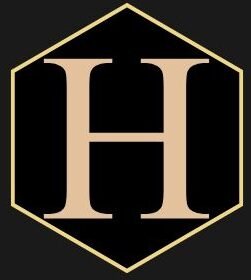The Bicentennial Quarter: A Commemorative Gem
The 1976 Bicentennial Quarter, issued to commemorate America’s bicentennial, distinguishes apart from its conventional predecessors with a distinctive and significant design. The reverse features a depiction of a Colonial drummer holding a torch surrounded by thirteen stars, commemorating the founding American colonies. Meanwhile, the obverse retains George Washington’s iconic profile but carries two inscriptions, “1776-1976,” to commemorate the country’s 200th anniversary.
These quarters were minted at three primary locations:
- Philadelphia Mint (No Mint Mark)
- Denver Mint (D Mint Mark)
- San Francisco Mint (S Mint Mark)
Although the vast majority of Bicentennial Quarters hold nothing beyond their nominal face value of 25 cents, a select few—distinguished by specific attributes and rare minting anomalies—can fetch staggering prices in the collector’s market.
The Myth of the $540 Million Quarter
Let’s face the elephant in the room: no authenticated Bicentennial Quarter sale has ever exceeded $540 million. This astonishing figure looks to be a severe misconception or hyperbole resulting from questionable online statements. However, this does not negate the fact that some rare specimens have sold for significant sums, with certain prized varieties fetching tens—or even hundreds—of thousands of dollars. The key to determining a coin’s genuine value is to recognize the distinguishing traits that enhance its worth above the ordinary.

What Separates a Valuable Bicentennial Quarter from the Rest?
Not every 1976 Bicentennial Quarter is an extraordinary find, but some specific traits significantly enhance their desirability and financial value. Here’s what to scrutinize:
1. Mint Marks & Composition
The coin’s origin and material composition are crucial determinants of its market value:
- Philadelphia Mint (No Mint Mark) – Predominantly composed of copper-nickel and highly common.
- Denver Mint (D Mint Mark) – Also a standard copper-nickel issue.
- San Francisco Mint (S Mint Mark) – Some of these were struck in 40% silver exclusively for collector’s proof sets, making them more valuable.
How to Verify:
- Inspect the obverse side beneath “IN GOD WE TRUST” for the mint mark.
- Weigh the coin: Silver quarters weigh 6.25 grams, whereas standard copper-nickel quarters weigh 5.67 grams.
- If your quarter bears an “S” mint mark, it could be composed of silver, warranting further investigation.
2. Minting Errors: The Collector’s Holy Grail
Numismatic anomalies often transform an otherwise ordinary coin into a collector’s dream. Some of the most sought-after Bicentennial Quarter errors include:
- Doubled Die Errors – A result of the coin being struck multiple times, causing overlapping or blurry text and imagery.
- Off-Center Strikes – Coins struck with misaligned dies, leading to a skewed design. The more severe the misalignment, the greater its value.
- Clipped Planchets – An irregularly cut coin blank can result in missing edges or a crescent-like defect, increasing desirability among collectors.
3. Uncirculated and Proof-Grade Coins
Coins that have never entered general circulation or have been specially minted for collectors tend to command premium prices.
How to Identify:
- Uncirculated coins exhibit pristine surfaces with sharp, well-defined details.
- Proof coins boast a striking mirror-like background with sharp contrast.
- For precise valuation, consider submitting the coin to grading services such as PCGS or NGC.
Estimated Value Breakdown
Below is an approximate guide to potential valuations of various Bicentennial Quarter types:
| Type | Estimated Value |
|---|---|
| Common Circulated Quarter | $0.25 – $1 |
| Uncirculated Copper-Nickel Quarter | $10 – $25 |
| Silver Bicentennial Quarter (Proof) | $10 – $100 |
| Doubled Die Error Quarter | $3,000 – $10,000+ |
| Off-Center Strike Error | $1,000 – $10,000+ |
| Ultra-Rare Error (Double-Strike or Extreme Off-Center) | $100,000+ |
How to Determine If Your Quarter Is Valuable
Want to assess whether your quarter is a hidden gem? Follow these steps:
- Identify the Mint Mark – Look for an “S” mark, as silver variants are more valuable.
- Evaluate Its Condition – Coins with minimal wear and sharp details hold greater worth.
- Examine for Errors – Blurred or doubled text, misaligned strikes, or clipped edges may signify a rare variant.
- Weigh the Coin – A weight of 6.25 grams indicates a silver composition, while 5.67 grams signifies a standard issue.
- Seek Professional Authentication – If you suspect your coin has substantial value, consult a grading service such as PCGS or NGC for verification.
Where to Sell Your Bicentennial Quarter
If you determine that your quarter possesses significant value, consider these reputable selling avenues:
- Online Auctions (eBay, Heritage Auctions) – Access a global pool of collectors.
- Coin Dealers – Local and online numismatic professionals can provide appraisals and immediate purchase offers.
- Coin Shows & Expositions – Engage directly with seasoned collectors and industry experts.
- Professional Grading Services (PCGS, NGC) – A certified grading can enhance credibility and maximize the coin’s value.
FAQ
1. What makes a Bicentennial Quarter worth $540 million?
A rare Bicentennial Quarter is worth millions due to minting errors, like double-strikes or unique die flaws. These errors make the coin extremely valuable to collectors and investors.
2. How can I identify a valuable Bicentennial Quarter?
Look for unusual features such as doubled text, misaligned designs, or any imperfections in the minting. Mintmarks or special patterns could also increase value.
3. Where can I sell my $540 million Bicentennial Quarter?
You can sell rare coins through trusted dealers, auction houses, or online platforms like eBay. A professional coin appraiser can also help verify its authenticity and value.
4. Are all Bicentennial Quarters worth millions?
No, most Bicentennial Quarters are only worth their face value—25 cents. Only those with rare minting errors or unique features command the high prices.
5. How do I know if my Bicentennial Quarter is worth anything?
Have it professionally graded by a numismatist or send it to a reputable coin grading service to determine its condition and value. Look for signs of rarity, such as mistakes in the design.



